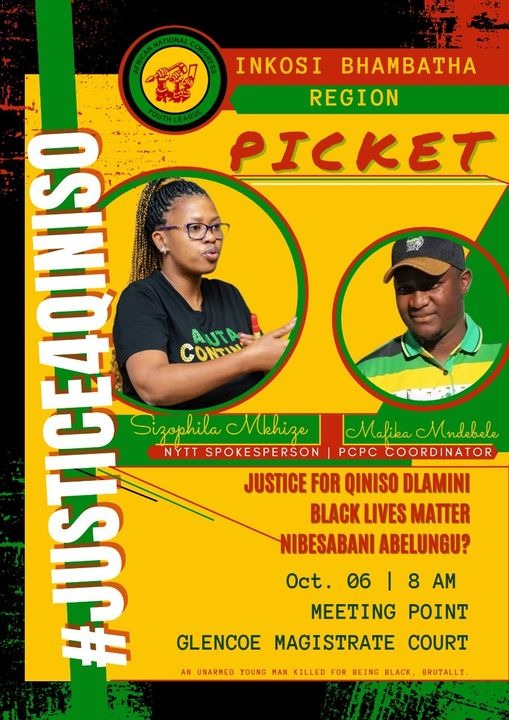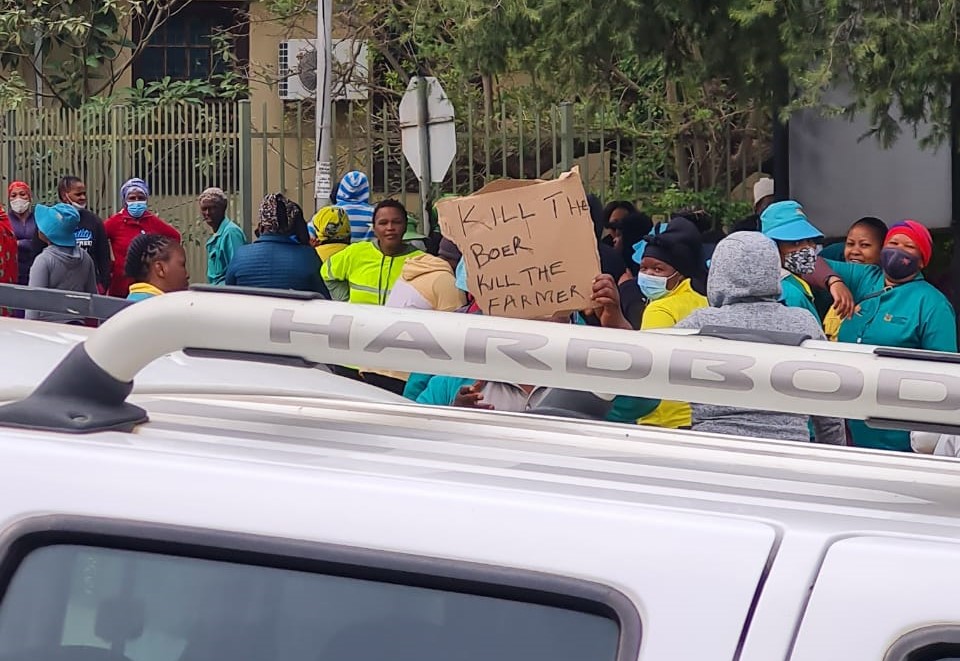On 28 September seventeen-year-old Qiniso Dlamini was fatally shot in the gut during a scuffle with farmer Garth Simpson. This is the story about how Dlamini died – but really it is two stories. Which version is true will depend on how available evidence is appraised.
Common to each version is that Dlamini, an undoubtedly sweet-looking teen who aspired to become a lawyer, went with a group of peers onto Simpson’s farm, near Glencoe, in the rough north of KZN, between Msinga and Newcastle. Dlamini and his associates reportedly went to retrieve cattle, which had strayed onto Simpson’s farm. From there the versions part ways.
The first account is provided by the Department for Agriculture and Rural Development (the Department) through KZN MEC Bongi Sithole-Moloi. On this version, reported here, ‘a fuming farm owner’, Simpson, arrived on the scene and ‘accused [Dlamini] of trespassing before he was shot dead’. The charge of this version is murder; Simpson has been arrested and is appealing for bail.
The second account appears to be provided by video evidence. The video is disturbing, one minute long, and necessary to review.
In the video several cattle are seen within a fenced kraal on Simpson’s farm. Dlamini, in a steel-grey shirt and white pants, is near the cattle, on the opposite side of the fence to Simpson. Dlamini’s associates can be heard whistling. Simpson fires a warning shot before saying, ‘The next one, hey! Hey, suka!’ to Dlamini.
Dlamini, holding something that looks like a stick or crop, then ducks through the fence and attacks Simpson. Dlamini throws a kick, while trying to hold Simpson’s rifle. One of Dlamini’s associates says, ‘Umganshayo [don’t hit him]’ repeatedly but Dlamini kicks Simpson anyway. Two of Dlamini’s associates converge on Simpson, either grabbing his gun or his body. Dlamini throws a wild punch at Simpson that misses. A shot goes off, fatally striking Dlamini. Dlamini’s associates disperse.
On the second version Simpson did not confront Dlamini for trespassing or for trying to retrieve his cattle or out of blind rage. Instead, Dlamini died of a gunshot wound after physically attacking Simpson – after the farmer had fired a warning shot – and attempting to disarm Simpson. If Simpson discharged the fatal shot, it could be that he did so as his life was directly threatened in such a fashion that he believed he could only save himself by shooting his attacker.
In South African law there is a concept of ‘self-defence’, which applies on this version.
In both versions, questions arise over what lawyers call ‘motive’. On the first version the question is; what was Simpson’s motive?
In South Africa it is illegal to shoot someone simply for trespassing. The consequences of doing so are known to be dire, if one is caught in the act. So, if Simpson’s premeditated intention was to kill Dlamini illegally why would he do so while his son, Dean, was filming?
Moreover, why would Garth Simpson first fire a warning shot? Why would he only wait until after he was kicked and nearly struck a blow to the face, nearly overpowered and disarmed, before committing premeditated murder? And why, having done all that, would he leave so many other witnesses unscathed?
The Department has ‘condemned’ the killing, and Simpson has been charged with murder. For that charge to stick those questions, in light of the video, must be answered. The state prosecutor and police have refused to admit the video as evidence, and Dean Simpson had not been interviewed by the police as of 3 October. Whether a subsequent attempt to consider the evidence has been made is not yet known.
On the second version, illuminated by the video, the motive question falls on Dlamini. Why would he respond to the warning shot by trying to assault and overpower the man who had just sent him a clear warning?
Greater light is shed on these questions by the following account, provided by Johan du Plessis and Hermann de Wet, who are involved with the local security group.
On this account two of the cattle Dlamini wanted to collect were branded, showing that they were formerly owned by Richard Catlitt, a neighboring farmer who moved away a year or two ago, and who suffered stock theft. Since the brand indicated potentially conflicting ownership claims, Simpson called the police, in particular a stock theft unit, and held the evidence until the matter was resolved.
Add to this a pattern of illegal grazing, arson attacks in the area over the recent winter and spring, and background tensions are high, compounded by the potential that Dlamini may have been about to be caught with cattle that may not have belonged to him or his family, and may have intended to conceal evidence of an earlier crime by overpowering Simpson.
Is that the full story? I do not know. It would be most helpful if the police gathered evidence and if the public was made aware of all relevant facts.
The bail hearing is scheduled for tomorrow. During the arraignment last week the tyres of one of the Simpson family’s cars were slashed outside the Magistrate’s Court at Glencoe. I have been told that death threats were levelled against Garth Simpson’s legal team outside the courtroom.
Soon after Simpson’s arrest, a shed on his farm was burnt, damaging a car and a quadbike, and fires blazed on the grazing land.
Black First Land First and the EFF are among parties that have promised to show a presence outside the bail hearing to demand that Simpson be denied bail.


Du Plessis, who called for cool-headedness, said: ‘We are very worried about the safety of this area. Very worried. It looks like people are trying to politicise this thing, to even make it a racial thing, but that is not what happened.’

